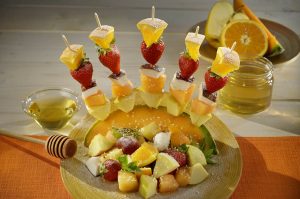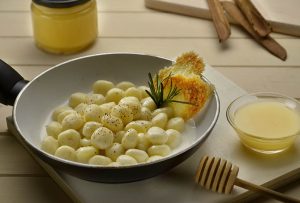It is important in this case to use the plural: wildflower honeys are the sum product of many honeys, as numerous as the combination of flowerings from which bees collect nectar. Wildflower honeys will thus differ in consistency, staying liquid for longer or else crystallising quickly, depending on the percentage of acacia, chestnut or honeydew present. “Wildflower honey” is the purest expression of the area of collection and contains all the aromas, colours and tastes of the territory in question.
Crystallised more often than not, wildflower honey tends towards amber in colour, but may vary from opaque white to gold with orange hues, through to brilliant yellow and even hazelnut. It has an enveloping aroma with a bouquet that can reveal floral notes and hints of candied fruit. The flavour is sweet, fruity and floral, with a rich and extensive aromatic range that can reveal surprising aromas which differ considerably depending on the collection season, that of both bees and beekeeper. Wildflower honeys from the plain, hills and mountains are never the same from one year to the next, even when collected in the same locations.
It is a versatile honey that lends itself to countless uses and situations: from its traditional use in milk to use as a dressing. It is perfect in hot drinks, spread on bread, with butter, dried fruit or paired with soft fresh cheeses like taleggio and squacquerone.




